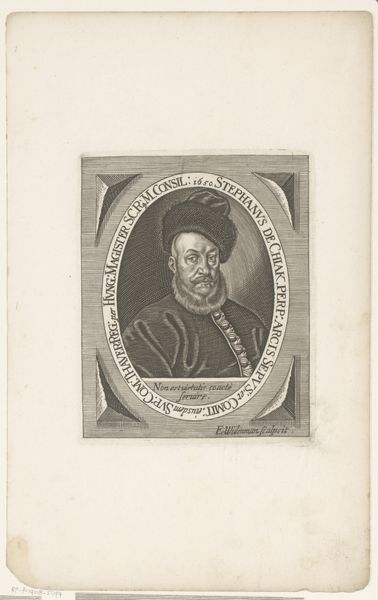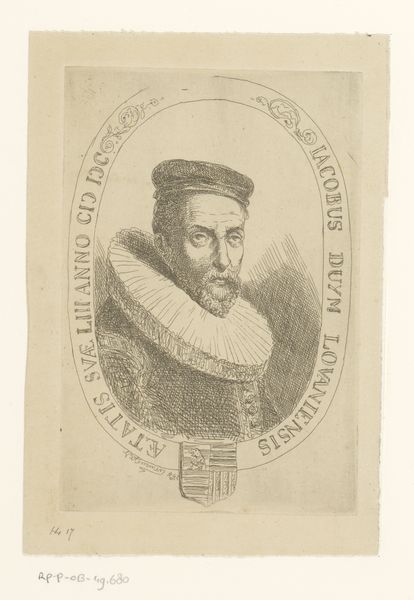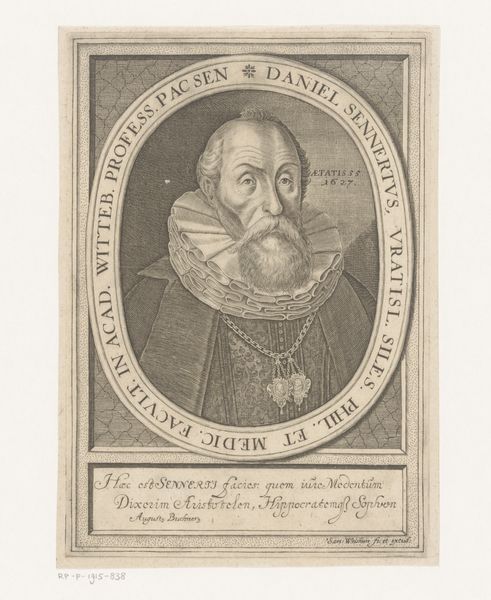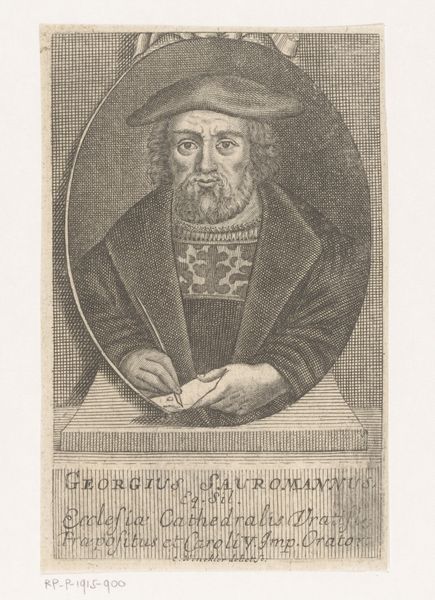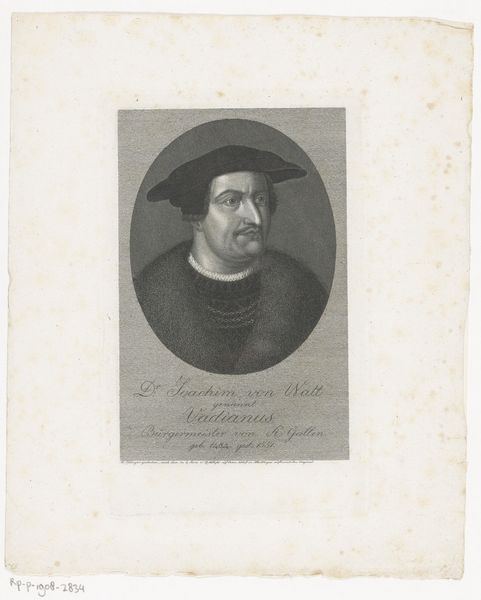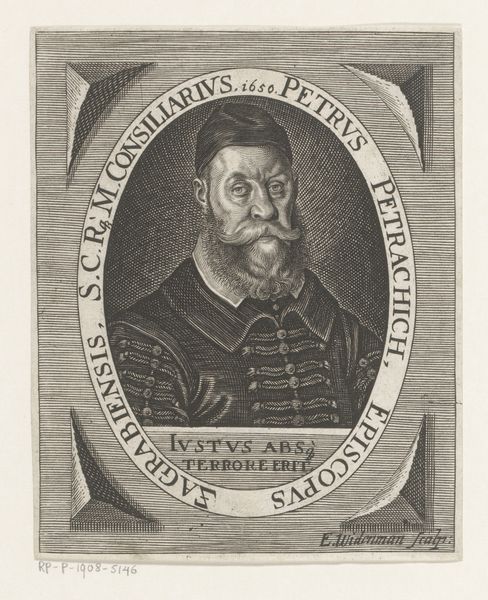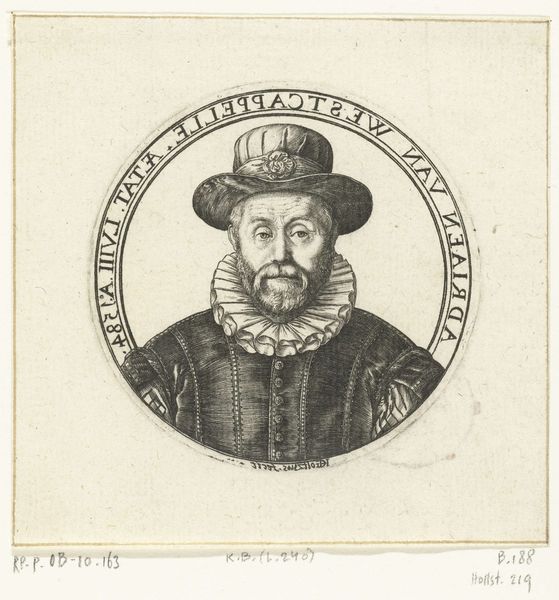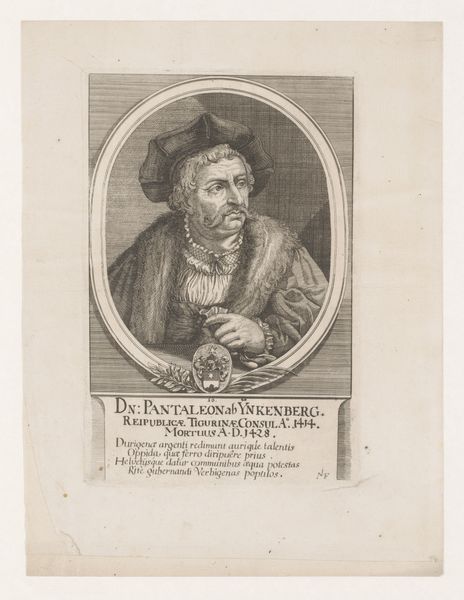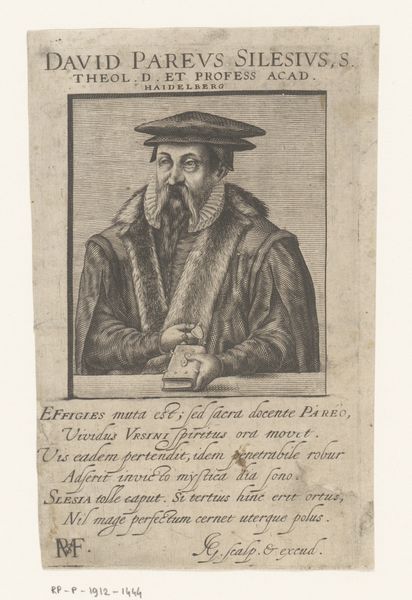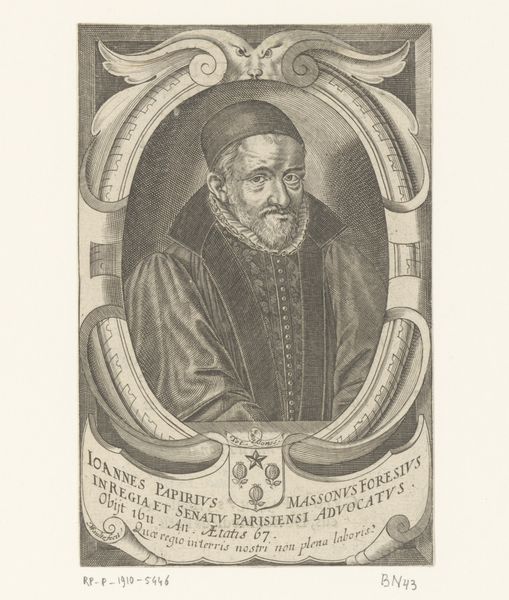
print, engraving
#
portrait
#
baroque
# print
#
figuration
#
line
#
history-painting
#
engraving
Dimensions: height 110 mm, width 76 mm
Copyright: Rijks Museum: Open Domain
Editor: So, here we have "Portrait of Cleric Girolamo Rosini," a print made in the 18th century by an artist known only as Monogrammist FT. It’s got this delicate, linear quality… I’m struck by how serious and contemplative the cleric seems. What stands out to you? Curator: Well, the seriousness you notice, I think it’s tied to a specific visual language. Portraits of clerics often aim to convey piety, but here, notice the gaze. It’s direct, unwavering. What might that signify about the role of the Church at the time, do you think? Editor: Maybe a sense of authority? He does look quite self-assured. Is that typical of Baroque portraits? Curator: It is *a* representation. But think about the scroll beneath the portrait, with the text proclaiming his role. Scrolls in art have long acted as symbols of knowledge or authority. Here, combined with the sitter’s direct gaze, it reinforces his importance. The image projects the cultural authority of the Church. Can you see that working in conjunction with the way line dictates tone and shadow? Editor: Absolutely. I see how all these elements contribute to a carefully constructed message about the Church and its leaders. It's like he's holding the weight of knowledge itself. Curator: Exactly! So what have you discovered about symbols by really looking? Editor: I learned about looking at Baroque portraiture and its iconographic significance through carefully designed symbolism meant to convey very clear concepts about the Church in general. Thanks! Curator: And how images create connections to history itself. Thank you!
Comments
No comments
Be the first to comment and join the conversation on the ultimate creative platform.

